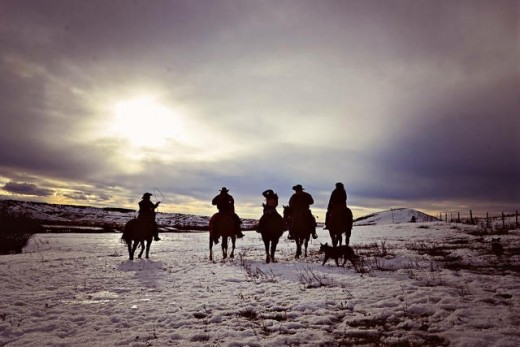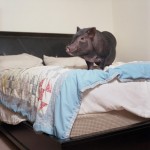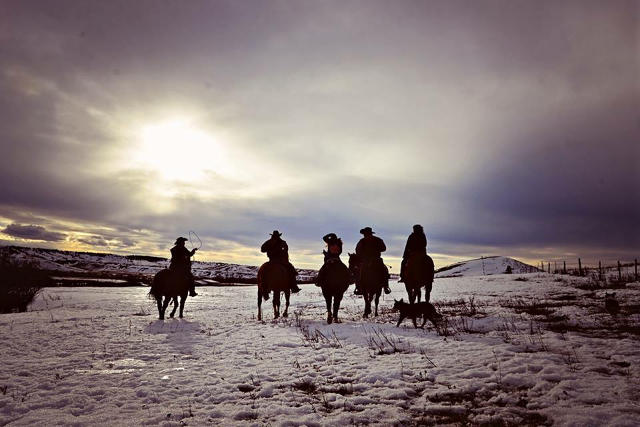Can flora and fauna-friendly beef lend a hand Ranchers And Conservationists Get along?
The American Prairie Reserve is an ambitious and controversial effort to build “america’s Serengeti” in Montana. it is now turning to an not likely spin-off business to get ranchers on board.
June 9, 2015
Fifth-technology Montana rancher Michelle Fox remembers as soon as reading a passage from the journals of Lewis and Clark. The explorers have been describing a spot located close to where her tribal reservation is as of late—the view, back then, was once “black with buffalo,” Fox, a member of the Gros Ventre Tribe, remembers. “I was standing there, and it’s laborious for me to check how it was once,” she says.
in fact, hunters long ago displaced the tens of hundreds of thousands of buffalo that after roamed the great Plains. Now, by means of making a couple of essential modifications to property, Fox feels she is doing her part in an unparalleled effort to carry the buffalo (also referred to as the American bison) again.
Fox’s ranch is near lands owned by means of the American Prairie Reserve (APR), a nonprofit with an formidable imaginative and prescient to construct “the usa’s Serengeti” in north-valuable Montana. The privately financed effort aims to attach and protect 3.5 million acres of grassland where native flora and fauna, together with purebred bison, coyotes, elk, and antelope, can roam—and vacationers can talk over with. When completed, it might be bigger than any national park in the decrease forty eight U.S. states, about roughly the scale of Connecticut.
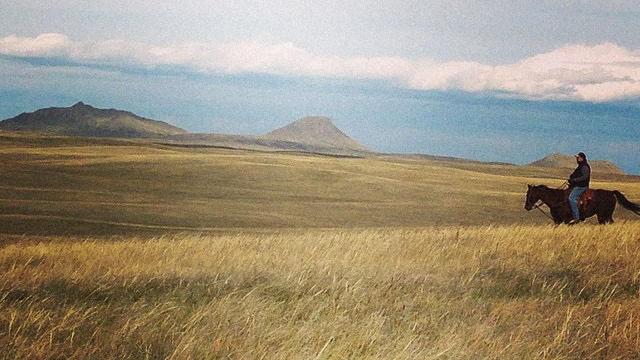
The project is controversial in the community. It rubs immediately in opposition to the long historical past of pressure between ranchers and conservationists over america’s frontier. in the long-time period, APR plans to raise $500 million and hopes to slowly purchase ranchers’ property in its challenge area to help cobble together the reserve through a mix of private and public lands. no one is compelled to sell, but many in the area consider it at worst a “land grab” by way of outsiders and at perfect but another risk to the way their way of life, according to a Bloomberg piece.
but Fox, whose land adjoins the APR space, isn’t an opponent, and neither are all ranchers. In 2013, APR launched an unlikely spin-off industry, referred to as Wild Sky, geared toward easing tensions: It started promoting beef below a brand known as Wild Sky.
“the frenzy behind Wild Sky was to be proactive about setting up a route for each ranchers and conservationists to get alongside,” says Laura Huggins, Wild Sky’s supervisor of commercial initiatives. “We notion one of the best ways to do this was once thru a monetary reward.”
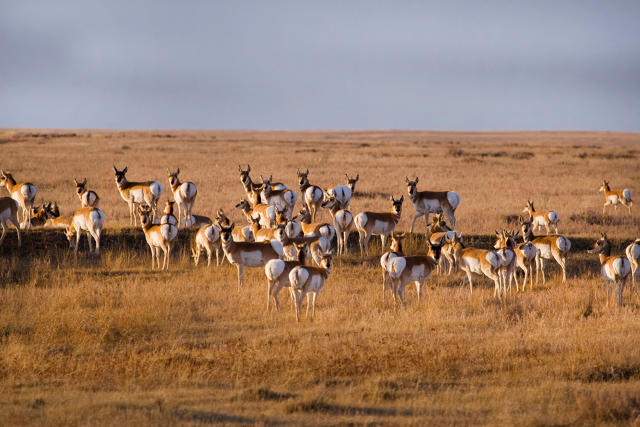
Wild Sky is working to recruit ranchers, like Fox, to put into effect measures on their ranch so wildlife within the space can cross thru. In change, the ranchers obtain additional funds raised from the sale of wild Sky’s red meat—which can be grass-fed and drug- and hormone-free—in shops across the us of a. because the label expands, the goal is that other profits will help fund the greater American Prairie Reserve initiative, which is at the moment about $seventy one million against its $500 million fundraising goal.
It’s no longer the first attempt at a flora and fauna-friendly beef label that has been tried. greater than ten years ago, the character Conservancy and other environmental groups tried a similar exercise, known as Conservation pork, that did not capture on. Partly, says Huggins, it was once ahead of its time—shoppers didn’t in reality care as so much about where their steak came from again then. however, importantly, they didn’t have the proper partners.
“They have been a bunch of conservationists trying to sell beef, and from what we could inform, they didn’t relatively understand how sophisticated it was,” she says. “The trade didn’t really work.”
Wild Sky is finding out from this situation, hiring “meat heads” from the trade and expanding slowly in keeping with demand. thus far, it’s signed on 4 ranchers to the program, including Fox, and is selling about $70,000 every week in red meat at about 65 meals shops, massive and small, around the nation. the company is now in talks with higher grocery store chains, Huggins says.

In could, Wild Sky struck a deal in an effort to allow it to expand more speedy. Working with Jensen Meat company, a large meat processor based in California, it’s going to provide a new line of pure ground beef that Jensen produces. The package deal will characteristic the American Prairie Reserve logo and doubtlessly the face of wild Sky ranchers like Fox. though the beef usually won’t come from these ranchers, a element of the sale proceeds will go to funding wildlife-pleasant improvements on the ranchers’ lands (at the moment, Wild Sky red meat is sourced from the broader nice Plains area.)
At Fox’s ranch, these enhancements seem quite easy to this point. She’s replaced barbed wire fence with wildlife-friendly fencing, which is easy at the backside so elk, deer, and different animals can slip beneath. She’s gotten her children to prevent capturing at prairie dogs, a typical observe because many ranchers believes the holes they leave are bad for the cows and pastures (although there is a little analysis that shows otherwise). in the end, her goal is to restore the pure hydrology to her lands as smartly, quite than the usage of irrigation.
Fox’s lengthy heritage on the land has made her feel a private stake in APR’s conservation mission, but she was once still at first nervous about becoming a member of Wild Sky. finally, she says, it was a industry choice for her and her family. With the additional money she’s gotten within the final yr, she’s additionally been in a position to beef up her barn, build a greenhouse, and typically assist her domestic live extra self-sufficiently from the land. After she and her husband made a few tweaks to her operation to fulfill Wild Sky beef requirements, their first calf in order to eventually be sold as Wild Sky meat was once born in March.
however will everyone in point of fact feel the same as she? possible now not.
“There’s a lot of misconceptions about APR here in the local region. they think that they come in, and they purchase up these ranchers land, it’s the same as they’re pushing them out. That couldn’t be farther from the truth,” she says. “i attempt to educate individuals about what APR is set…There might be 10 people standing there, but when i can get thru to two of them, that’s two more informed individuals.”
this text used to be up to date to more safely replicate the relationship between APR and Jensen Meat company.
[All Photos: courtesy of American Prairie Reserve]
quick company , learn Full Story
(124)

